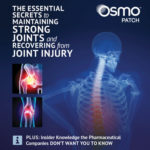How are soft tissue injuries to the joints treated, including Baker’s cysts and Bursitis?
Primary treatment of soft tissue injuries are based mostly on the rules of R.I.C.E (rest, ice, compression, and elevation) and Avoid H.A.R.M (Heat, Alcohol, Reinjury. These are stated to be most critical in the 48-72 hours following the injury1.
Soft tissue injuries frequently result in bleeding and tissue damage followed by an inflammatory phase that is a necessary part of the tissue repair2. Though the inflammatory process is a very important component of healing, when it continues for too long a period it may cause further swelling and this could then be negative to the process of healing2. The aim of R.I.C.E is to reduce the amount bleeding and leakage of inflammatory mediators into the affected tissue to minimise the amount of swelling and associated pain and discomfort.
If swelling is minimised early, this will help the injury to resolve quicker and should also result in a reduction of pain.
Immediately following a soft tissue injuries a release of prostaglandins and histamines will occur within the injured area and damaged capillaries will leak cellular waste (water, dissolved electrolytes and proteins) into the encompassing tissue2. White blood cells are then recruited into the region to get rid of damaged tissue. As soon as the process starts, fluid accumulates in the intercellular space causing oedematous swelling. A decrease in swelling is frequently associated with a decrease in pain and discomfort. This could be a result from the reduction in pressure and/or a decrease in pain mediators in the associated tissue.
While the body has inbuilt mechanisms to get rid of oedema through re-absorption, it doesn’t always do this efficiently, which can then lead directly to an extended process of healing, continuing pain and the likelihood of chronic inflammation followed by the formation scar tissue2. Additionally there are other factors that may also lend to delayed healing. These may include non compliance with R.I.C.E in the primary 48-72 hrs, or an injury sustained in an area that might not easily or readily allow for adequate support and/or rest.
In such circumstances as mentioned above, the utilisations of NSAIDs or steroids are commonly advised to reduce and control the level of inflammation, swelling and associated pain. Unfortunately not all people respond well to treatment with these classes of medicines. Additionally, there are contraindications and risks connected to each of these classes of medicines.
The extract below is from the Victorian Government better health website and is pertaining to the treatment for bursitis:
“Treatment will depend upon the cause of the bursitis. Treatment aims to alleviate the symptoms as much as possible while the healing process takes place. Options may include pain-killing drugs, cold packs, gentle mobilising exercises and rest. Anti inflammatory medications or injections of corticosteroids may be used in cases of severe pain.
If infection is present, there is usually warmth, redness, pain and swelling in the areas affected. Treatment with an appropriate antibiotic is necessary. If the bursitis was triggered by overuse, it is important to avoid the particular activity.
Correct posture and joint protection are useful and braces or splints can decrease the stress on the areas and support good alignment. After a major attack, it is important to consider how recurrences can be prevented.”3
1. Vic Gov DHS, (2008), Soft Tissue Injuries (Sprains and. Strains) Fact Sheet http://www.health.vic.gov.au/edfactsheets/softtissue-injury.pdf
2. Kumar V, et al. (2005). Robbins Basic Pathology 7th edition, (Chapter 2) W.B. Saunders Company: 33-59
3. http://www.betterhealth.vic.gov.au/bhcv2/bhcarticles.nsf/pages/Bursitis?open







